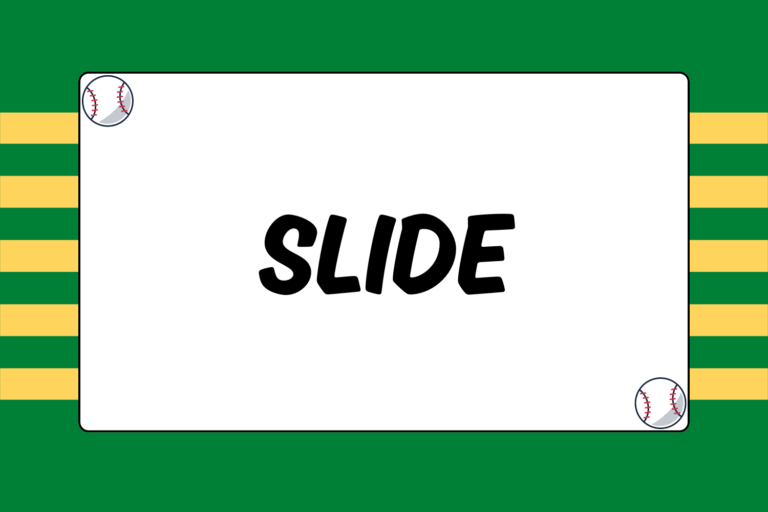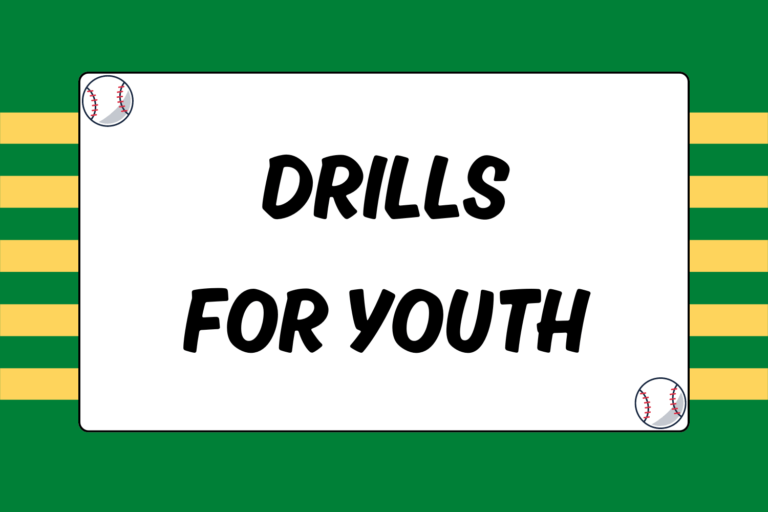Communication on the baseball field is vital, whether it’s between players, coaches, or umpires. Since baseball’s an outdoor sport, it can often be difficult to hear what someone’s saying from across the field. This affects umpires most directly because they have to make calls on every single pitch. As a result, an umpire uses both verbal calls and physical signals to communicate on the field.
So if you’ve ever thought about becoming an ump, keep reading for an explanation on how to position yourself behind the plate and around the diamond. In addition, this guide offers a crash course on the various signs you might use during a game.
Home Plate Umpire Positioning
With the exception of the Major Leagues (which uses four umpires) and NCAA (which usually uses three umps), two umpires is the norm for most levels of baseball. In this case, one ump will be positioned behind the plate while the other handles the field. When you’re the home plate umpire, set yourself up just behind the catcher.
You don’t want the catcher to impede your vision, though, so shift slightly to the side until your head’s over the inside corner of the plate. This will give you a clear view of the strike zone. Square your shoulders and hips towards the pitcher. As he begins his delivery, crouch down behind the catcher so that your eyes are level with the top of the strike zone.
Home Plate Umpire Signals
There’s a standard set of signals used to convey each type of call. In order to be an umpire, you need to know every single one of them! Most are pretty easy to learn, and you can probably pick up nearly all of them by simply watching a baseball game. Here’s a list of the signals a home plate umpire typically uses:
Starting the game:
To start the game, simply point to the pitcher and shout, “Play ball!” (You can also point to the pitcher to re-start play after a timeout.)
Giving the count:
Relaying the count regularly is an important part of your job, particularly on a field without a scoreboard. Give the count in the form of two numbers — balls are listed first and strikes are listed second (for example, 3-0 or 1-2). To signal this, use your fingers to show the number of balls with your left hand and the number of strikes with your right hand.
Strike:
To call a strike, stand up out of your crouch after the catcher has the ball. Raise your right arm to form a 90-degree angle at the elbow, and make a fist with your hand. Alternatively, you can also raise your right arm to the side with your elbow bent and make a pointing motion (position your hand as if you were trying to mime a toy gun).
Ball:
Calling a ball requires no physical signal. It’s sort of the default call; if you don’t do anything, people will assume you called a ball. To make it simple, just stand up out of your crouch and say “Ball” aloud.
Fair ball:
With only two umpires, you’re usually responsible for fair/foul calls down the third base line. To call a fair ball, point towards the field (away from foul territory) with your right arm.
Foul ball:
If the ball’s fouled off, raise both hands with your palms open and bend each elbow to form 90-degree angles. You can accompany this motion by yelling, “Foul ball!”
Foul tip:
Raise both hands up to shoulder height, touch your fingers together, and then brush or flick one hand over the other to signal a foul tip. You can follow this up with a “strike” sign to show that the foul tip counts as a strike.
Timeout:
The signal for a timeout is similar to that of a foul ball. Simply raise both arms up in the air and shout, “Time!” It’s also a good idea to move out from behind the plate while you make the call so that the pitcher (and everyone else) can easily see that the ball’s dead.
Fun Fact:
A ball that hits the foul pole is actually in fair territory and ruled a home run.
Field Umpire Positioning
Serving as the field umpire will require considerably more mobility on your part. With no runners on base, situate yourself directly along the first base line, a few feet onto the outfield grass. This will put you in the best position to see any plays at first base, as well as to make fair or foul calls on balls hit down the line. You also have the best angle to assist the home plate umpire in determining check swings. If the batter launches an extra-base hit, you need to trail him for a potential call at second or third base.
When there’s a runner on first base, move onto the infield grass. Stand behind the pitcher to the right side of second base, and try not to obscure the second baseman’s view. From here, you’ll be close enough to the pitcher to call pick-off plays and balks. This is also the best position to get a good view of plays at second and first base. Also, remember that if the ball’s hit deep to the outfield, you’ll need to hustle out there as far as you can in order to get a look at the play.
With a runner at second base, you want to stay on the infield grass so that you can be close to a play at any base. However, move over to the left side of second base in order to stay ahead of the lead runner. Stay relaxed and focused. You can hunch forward a bit and rest your hands on your knees, but stay on the balls of your feet so you can move quickly if you need to.
Field Umpire Signals
The field umpire uses signals much less frequently than the home plate umpire, who must call every pitch. But in the field, you have a lot of ground to cover. It’s vital that you put yourself in a good position to make calls, so stay on your toes and never lose focus. Here are some of the most common signals for a field ump:
Note: Field umpires can use the same signals as home plate umpires to call fair balls, foul balls, and timeouts.
Safe:
To call a runner safe, bend your elbows to bring both forearms into your chest. Then quickly extend your arms straight out to the sides and call, “Safe!”
Out:
Calling a runner out is similar to calling a strike: Simply raise your arm, bend your elbow to form a 90-degree angle, and close your hand into a fist. However, there’s room for some creativity on your part, as many umpires prefer to make “out” calls emphatically. Another option is to raise your arm up behind your head, close your hand into a fist, and make a punching motion forward.
Infield fly:
It’s important for an infield fly to be called immediately. Raise your right arm and point directly up to the sky while shouting, “Infield fly!”
Home run:
Most home runs are obvious, so a physical signal isn’t always critical. Nonetheless, to call a homer, raise your right arm over your head, extend your index finger, and twirl your hand around in a circle.
Ground rule double:
If a ball bounces over the fence or becomes lodged in some type of hazard, you need to signal that each runner is awarded two bases. Do this by simply raising your right arm over your head and holding up two fingers.
No catch:
There might be an occasional play wherein it’s tough to tell if a catch was made. Perhaps the fielder trapped the ball, or it bounced while he was attempting a diving or shoestring catch. Regardless, if no catch is made, you need to make a call quickly so the players know that the ball’s still live. You can use the “safe” signal for this — bring your arms into your chest and then extend them straight out to the sides. You can also point to the ground where the ball landed for emphasis.
Make the Call
Using signals on the baseball field is important because even if you can’t be sure everyone will hear what you say, you can make sure everyone sees what you’re calling. Memorize the signs in this guide and practice them in front of a mirror. It’s also a good idea to watch professional baseball games to get an idea for how the best umps in the business make calls. With a little practice, you’ll be ready to don the blue umpire uniform in no time!





